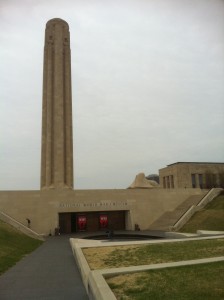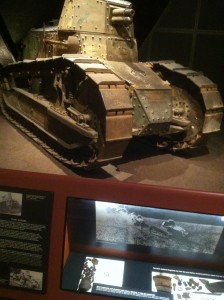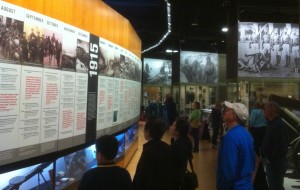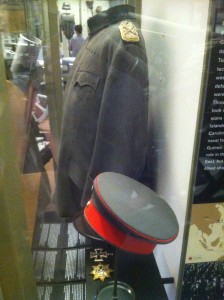Kansas City, Missouri is home to the National World War I Museum, and I visited while I was attending the annual conference of the Society for Military History. Let’s take a look at what makes this museum tick:
Quality of research
The availability of technical specs for the weaponry on display, and the broad strokes of historical discussion are well done.
Interest to historians, and non-historians
The most genius aspect of the National World War One Museum, is that it integrates macro- and micro-history flawlessly. Many museums only offer an endless onslaught of detail-driven and text-heavy descriptions, which are only interesting to someone who is already familiar with the subject. Others are very generic in their approach, and offer merely an overview. This museum, though, has a perfect mix of short overview panels and text/research-heavy history rabbit holes. No matter your mood or level of interest in history, you will have learned something by the time you leave, and it will be painless, I promise!
Flow/organization
There is a 217-foot tower in the center of the memorial, and the museum is arranged around the base of the tower’s foundation, inside a massive crypt-like building. The flow of traffic and narrative works splendidly in this circular pattern.
Conservation
The conservation is superb. Easily damaged items are all behind glass, and less fragile artifacts (including, most notably, a fantastic array of artillery pieces), are closer to the visitor’s scrutiny. There is a Renault tank on display which had been used by an American crew. It was disabled by a German cannon, and visitors can see the hole blasted in the tank’s rear armor. What was fascinating about this piece, from a conservation standpoint, was that several pounds-worth of shrapnel, and parts of the cannon shell, were recovered from the inside of the tank, and are also on display.

Clarity
Along the inside edge of the main exhibit space, the curators have installed a timeline which details each month of the war. Major military, social, scientific, and cultural events are placed in context. The weapons, uniforms, and ephemera on display are also arranged chronologically, keeping pace with the timeline on the wall. One aspect of the exhibit design which impressed me was that visitors see no sign of American contribution to the war until they are about two-thirds of their way through the museum – the point, chronologically, where the U.S. entered the war.
Vitality (“Revisitability”)
There are two separate galleries on the upper level, which change periodically, sometimes more than once per year. The walls are decorated with a very large painting (The Panthéon de la Guerre) which was created in France while the war still raged. When I visited, one of these galleries provided a glimpse into the years leading up to World War I.
Multimedia
The first stop after the ticket counter is a small theater, where visitors can see a ten minute movie that explains the global situation leading to World War I. This video is a great introduction to the social, economic, and military factors at work in the early 1900s. Near the end of the museum, there are sound booths where the curators have assembled a collection of oral histories and other audio from the period, which help bring the experience to life.
Accessibility (Americans with Disabilities Act)
The only portion of the museum that is inaccessible to wheelchairs is the tower observation deck, which can only be reached by climbing about 45 stairs. There is an audio guide available for a small fee, as well.
Gift shop
The gift shop has the usual fare: postcards, toys, knick-knacks, and shirts. A few things stood out to me though. They have a pretty impressive selection of books, including all the most important historical studies, and a well-chosen collection of literature/poetry connected to the war. (One item I was particularly tempted to buy was a shirt emblazoned with “Meet the Fokkers” and the silhouette of a Fokker Dr. 1 airplane.)
Should you go?

Absolutely! If you are anywhere near Kansas City in the next few years, make a special trip to see this collection. I guarantee you will learn something, and even family-members who “aren’t into history” will enjoy it. My only gripe is that I never saw anything about cavalry. Perhaps in the future there will be a temporary exhibit that tells the story of mounted combat in World War I. (See my interest in this previous article.)
(Did you enjoy this review? Please share it on Facebook, to spread the word, and subscribe to my email updates, so you don’t miss any useful history!)
I was in Kansas City a few years ago — and wished I’d known about this museum. I have always found war history intriguing. You mention the tank in this museum, when I was in Chicago at the Museum of Science and Industry I saw captured German U-Boat (U-505). They actually let you go through part of the vessel — which is really neat (although wouldn’t want to live on it — too claustrophobic).
Nice blog — great information.
Thanks.
– Charlie
Thanks for the feedback! I would love to see a U-Boat in person. I will make a point of it next time I’m in Chicago.